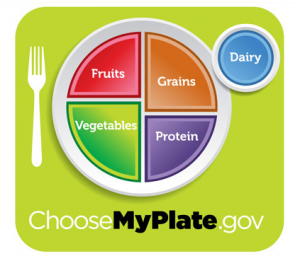The USDA’s New Food Guidelines
 The USDA has finally replaced its completely outdated food pyramid—which debuted all the way back in 1992—with a new plate icon to guide Americans to healthier eating. While the new guidelines definitely take a step in the right direction by reducing the prominence of grains in the recommended diet, this plate isn’t what the majority of Americans should be modeling three square meals after—especially if they want to drop pounds, reduce insulin resistance, and stave off diabetes.
The USDA has finally replaced its completely outdated food pyramid—which debuted all the way back in 1992—with a new plate icon to guide Americans to healthier eating. While the new guidelines definitely take a step in the right direction by reducing the prominence of grains in the recommended diet, this plate isn’t what the majority of Americans should be modeling three square meals after—especially if they want to drop pounds, reduce insulin resistance, and stave off diabetes.
To do this, roughly 80 percent of your meals should consist of lean protein, non-starchy vegetables, and a modest amount of healthy fats, like the kind found in almonds, olive oil, and avocados. At a time when type 2 diabetes is skyrocketing in children and adults alike due heavily in part to excessive carbohydrate intake, it’s frustrating to see the USDA continue to recommend high-carb grains at every meal. Even fruit, as good for you as it is in modest amounts, contains too much natural sugar for most people to eat it at every meal, especially when paired with grains. The USDA’s other mistake: Leaving healthy fats off the plate completely. Healthy fats not only curb appetite, but they’re also a great energy source for the body and actually help the body burn more fat.
Maybe in another 20 years or so they’ll finally get it right. Until then, unless you’re extremely active, curbing your grain intake is the easiest, smartest way to safeguard your health and a slender waist.


